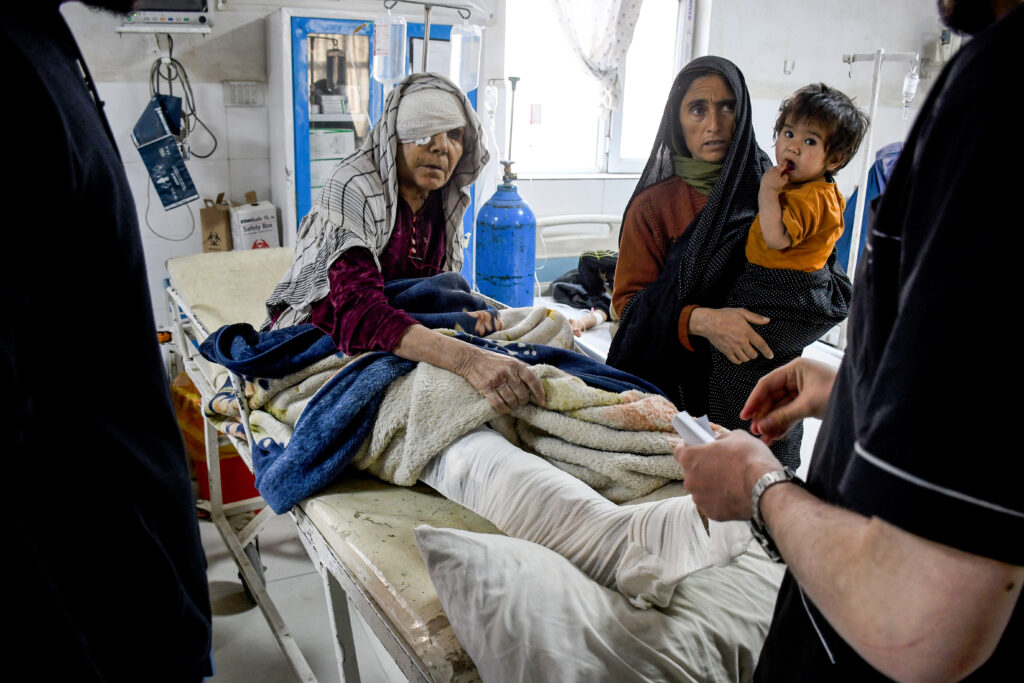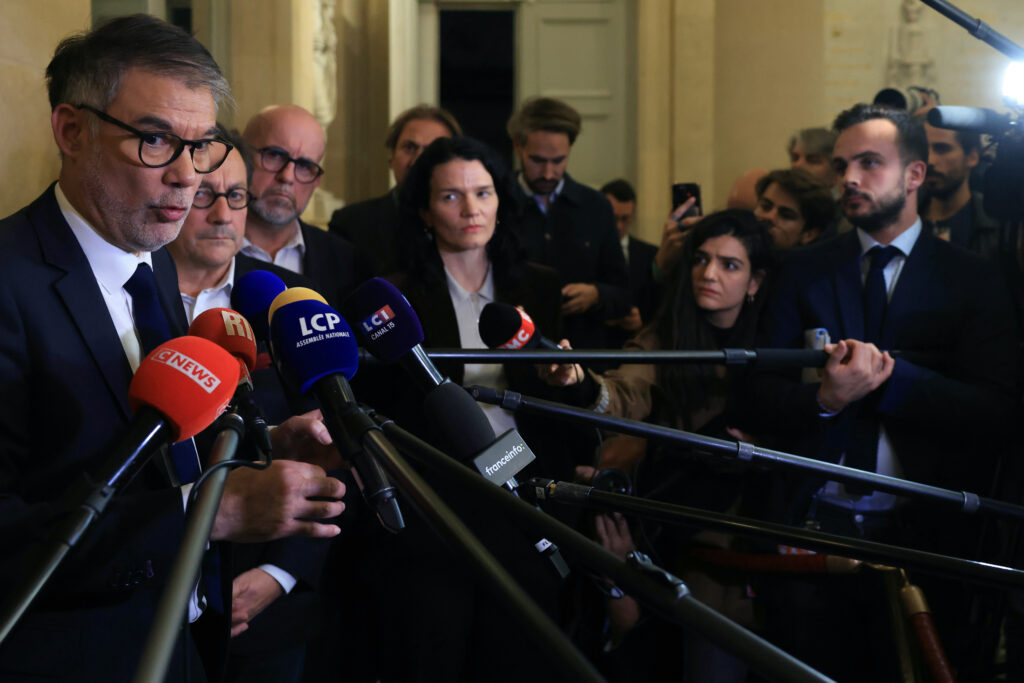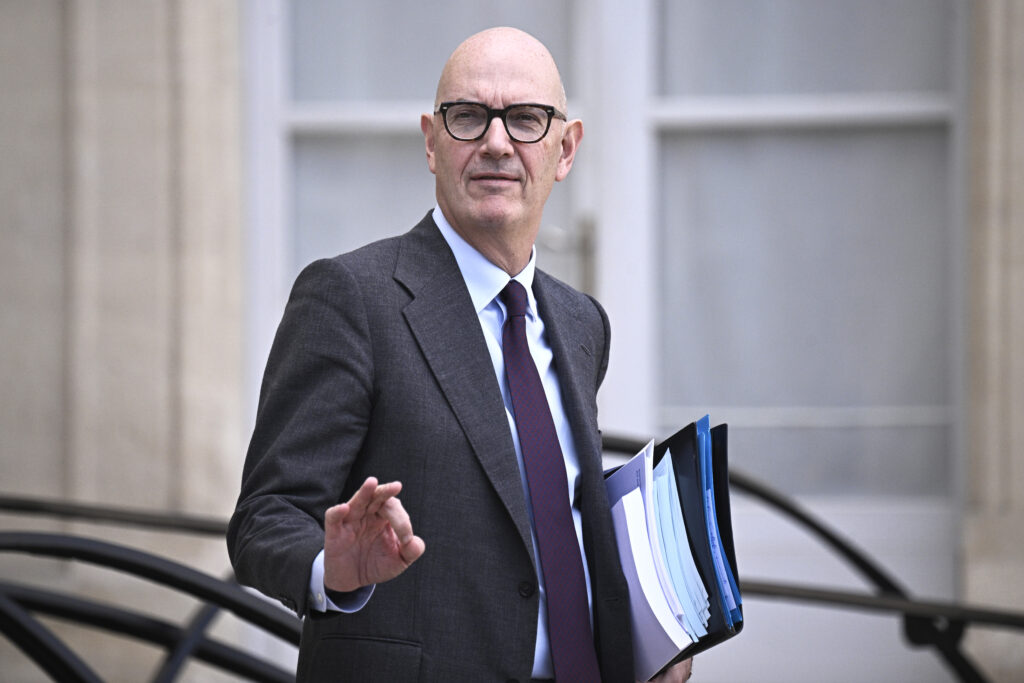L’Afghanistan de nouveau frappé par un séisme, plus de 20 morts
Au moins 20 personnes ont été tuées dans un séisme de magnitude 6,3 ayant frappé le nord de l’Afghanistan dans la nuit de dimanche à lundi, deux mois après le tremblement de terre le plus meurtrier de l’histoire récente du pays.Le séisme, qui s’est produit peu avant 20H30 GMT à Kholm dans la province de …
L’Afghanistan de nouveau frappé par un séisme, plus de 20 morts Read More »
Shafali Verma: India’s World Cup hero who disguised herself as boy
Shafali Verma was initially dropped from India’s Women’s World Cup squad but the opener returned as an injury replacement to star in the title win and etch her name in history.The 21-year-old batter scored an attacking 87 and took two crucial wickets with her part-time off-spin against South Africa in Sunday’s final in Mumbai.She was named player of the match for her all-round blitz as India won their maiden Women’s World Cup title at a packed DY Patil Stadium. Verma has given India many blazing starts since her international debut aged just 16 but fell out of favour with the selectors in the 50-over format because of patchy form.However, fate had different plans and an injury to in-form opener Pratika Rawal in the last league match forced India to replace her with Verma.Verma made just 10 in India’s stunning victory over holders Australia in the semi-finals but rose to the occasion in the title clash with her career-best ODI score.”I said at the start that God has sent me here to do something nice, and that reflected today,” Verma said.”It was difficult but I had confidence in myself — that if I can stay calm, I could achieve everything.”On a day when Verma could do no wrong, skipper Harmanpreet Kaur handed her the ball in the 20th over and she delivered immediately with the wicket of Sune Luus, caught and bowled for 25.She then got Marizanne Kapp caught behind on a ball sliding down the leg side in her next over.”We had spoken to her that if needed she will bowl one or two overs and in reply she said, ‘I am ready to bowl 10 overs’,” Kaur revealed.”That showed her confidence in bowling. I gave her the bowl at a crucial time and the back-to-back breakthroughs was the turning point for us.”- Next superstar -It has been a roller-coaster ride for Verma, who is from the conservative northern state of Haryana.As a nine-year-old she played in a boys’ tournament after cutting her hair short so she could get a game.”I told my father that I will go and play disguised as my brother (who was sick) and even had his name on my back,” Verma told AFP in 2020.”I played and became man of the match and series.”She also described how her father Sanjeev was cheated out of all the family’s money by an imposter who promised him a job.Fast forward to the present, and her ODI average was modest at 22.55 before Sunday’s heroics when she surpassed her previous 50-over best score of 71 not out.The 49-ball 50 was Verma’s first in three years, but at 21 years and 278 days she was the youngest to hit a half-century in a Women’s ODI World Cup final.In 2019, Verma was picked for the Velocity team in the women’s T20 Challenge — a precursor to the Women’s Premier League — and walked onto the field with Indian cricket great Mithali Raj.She shared the dressing room with international stars including England’s World Cup-winning all-rounder Danielle Wyatt, who called her the next “superstar” of Indian cricket.
Budget: pour Faure la “voie est étroite” mais “un chemin” est encore “possible”
Le premier secrétaire du Parti socialiste Olivier Faure a estimé lundi que, si la voie était “étroite” vers une adoption du budget par l’Assemblée nationale, un “chemin” lui semblait encore “possible” pour obtenir la disparition des “horreurs” encore contenues dans le texte.”Ce n’est pas parce que pour l’instant, nous ne sommes pas satisfaits qu’il n’y a pas un chemin”, a déclaré le député sur France Inter, alors que les députés s’apprêtent à conclure lundi huit jours de débat sur la partie “recettes” du budget de l’État. “Pour l’instant, nous n’y sommes pas encore mais je vois que c’est possible, je crois que c’est possible”, a insisté Olivier Faure, tempérant la position du chef des députés socialistes Boris Vallaud, pour qui en l’état, le groupe voterait contre le texte.M. Faure a notamment suggéré que la “trajectoire de déficit” puisse “être corrigée”. A ce stade des discussions, le déficit public atteindrait 4,7% du produit intérieur brut, soit la cible que s’était fixée le gouvernement, a expliqué lundi la ministre des Comptes publics Amélie de Montchalin, en excluant la taxe sur les multinationales votée par une alliance gauche-RN et que le gouvernement juge inopérante. “Je demande que les Français modestes n’aient pas à payer l’impôt que les plus riches ne veulent pas payer”, a complété Olivier Faure, à propos des différentes versions de la taxe Zucman rejetées en séance vendredi. Le même jour cependant, le Premier ministre Sébastien Lecornu a concédé le dégel des pensions de retraite et des minimas sociaux. Mais les socialistes, qui ont accepté de ne pas le censurer d’emblée, réclament encore ce dégel sur les allocations familiales ou les allocations logement, ainsi que la suppression de nouvelles franchises médicales, a précisé le député socialiste.A défaut de créer de nouvelles taxes, Olivier Faure réclame également qu'”on mette sur la table le débat sur ces fameuses aides aux entreprises de 211 milliards par an”.
Poupées à caractère pédopornographique: si récidive, Lescure veut l’interdiction d’accès de Shein en France
Le ministre de l’Economie Roland Lescure a indiqué lundi qu’il demanderait l’interdiction d’accès de Shein en France s’il vendait à nouveau des poupées sexuelles à caractère pédopornographique, que le géant asiatique de l’e-commerce a assuré avoir retirées de sa plateforme de vente.”Si ces comportements sont répétés, nous serons en droit, et je le demanderai, qu’on interdise l’accès de la plateforme Shein au marché français”, a déclaré Roland Lescure sur BFMTV et RMC. “Pour des actes terroristes, pour le trafic de stupéfiant et pour des objets pédopornographiques, le gouvernement est en droit de demander l’interdiction de l’accès au marché français”, “si on a des comportements répétés ou si les objets en question ne sont pas retirés dans les 24 heures”, a-t-il précisé.”Ces objets horribles, ils sont illégaux” et “il y aura une enquête judiciaire”, a-t-il indiqué. La Répression des fraudes (DGCCRF) a annoncé samedi avoir signalé à la justice la vente de “poupées sexuelles d’apparence enfantine” après avoir constaté leur présence sur le site de Shein, qui a prévu d’ouvrir mercredi son premier magasin physique pérenne à Paris. Roland Lescure a toutefois reconnu que la loi française pouvait être contournée par le recours à un système de type VPN. “La France n’a pas les moyens de lutter contre ça à ce stade”, a-t-il concédé. Entreprise aux racines chinoises qui a conquis le marché mondial de la mode éphémère (fast fashion), Shein s’est implantée progressivement dans le paysage du commerce en ligne depuis son arrivée en France en 2015. Elle est régulièrement accusée de concurrence déloyale, de pollution environnementale ou de conditions de travail indignes. Suscitant un tollé, Shein a prévu d’ouvrir mercredi son tout premier magasin physique pérenne au BHV, historique grand magasin de Paris, dans un espace de plus de 1.000 m2.”Je suis passé rue de Rivoli ce week-end, et j’ai vu les oriflammes de Shein tout au long de la devanture”: “c’est de la provoc”, a jugé Roland Lescure. Dominique Schelcher, le PDG de Coopérative U, a dit espérer sur X que “la découverte de poupées à caractère pédopornographique sur le site Shein par la DGCCRF va conduire à la FERMETURE en bonne et due forme du site par les autorités au plus vite”. Il a appelé le BHV à renoncer à ce projet.
Most equity markets rise on lingering trader optimism
Stocks rose on Monday after a busy last week, with optimism supported by another AI-led tech rally on Wall Street. Investors returned from the weekend in relatively good spirits after an upbeat end to October that saw China-US tensions ease, a Federal Reserve interest rate cut, and healthy earnings from market darlings including Amazon. Traders are also hoping for key US jobs data to be released later in the week, though the ongoing government shutdown — with Democrats and Republicans no closer to a reopening deal — could cause them to be suspended again.While the government closure has not had any major impact on markets, analysts warned it could begin to affect Americans.”The shutdown could soon feasibly become the longest on record, though markets remain largely unperturbed,” wrote Chris Weston at Pepperstone.”Public frustration is expected to build this week as (food) benefits for lower-income families are paused, and disruptions increase for domestic travel. New enrolments for Americans seeking access to Affordable Care Act plans may also become increasingly problematic.” After April’s plunge sparked by US President Donald Trump’s trade tariffs blitz, world markets have surged with Wall Street’s three main indexes and several others hitting record highs.Those gains have come on the back of expectations — and the delivery — of Fed rate cuts as well as a seemingly unending race to invest in artificial intelligence. That has pushed valuations of some firms to eye-watering levels, with chip titan Nvidia becoming the first $5 trillion firm last week.Wall Street’s gains Friday were tracked in most of Asia at the start of the week. Hong Kong, Shanghai, Singapore, Sydney, Wellington, Mumbai, Bangkok and Taipei all advanced, while Seoul piled 2.8 percent to a record as investors cheered a thawing of ties between South Korea and China.London and Paris opened on a positive note but Frankfurt dipped.Tokyo was closed for a holiday.Investors were keeping tabs on any new developments after Trump and Chinese President Xi Jinping met last week and agreed a deal to ease China’s rare earth curbs and lower US tariffs.Still, US Treasury Secretary Scott Bessent warned Sunday that the White House could again hike levies on China if it blocked rare earth exports.Oil prices edged up after the OPEC+ alliance said it would lift output again in December but would pause production in the first three months of 2026. Gold prices hovered around $4,000 after China said it was scrapping a tax incentive on buying the commodity.The precious metal has tumbled from its October 20 record above $4,381 as investors cashed out, following a more than 60 percent surge since the start of the year.- Key figures at around 0820 GMT -Hong Kong – Hang Seng Index: UP 1.0 percent at 26,158.36 (close)Shanghai – Composite: UP 0.6 percent at 3,976.52 (close)London – FTSE 100: UP 0.2 percent at 9,734.84 Tokyo – Nikkei 225: Closed for a holidayEuro/dollar: UP at $1.1534 from $1.1527 on FridayPound/dollar: UP at $1.3140 from $1.3139Dollar/yen: UP at 154.17 yen from 154.11 yenEuro/pound: UP at 87.83 from 87.74 penceWest Texas Intermediate: UP 0.6 percent at $61.32 per barrelBrent North Sea Crude: UP 0.5 percent at $65.11 per barrelNew York – Dow: UP 0.1 percent at 47,562.87 (close)





